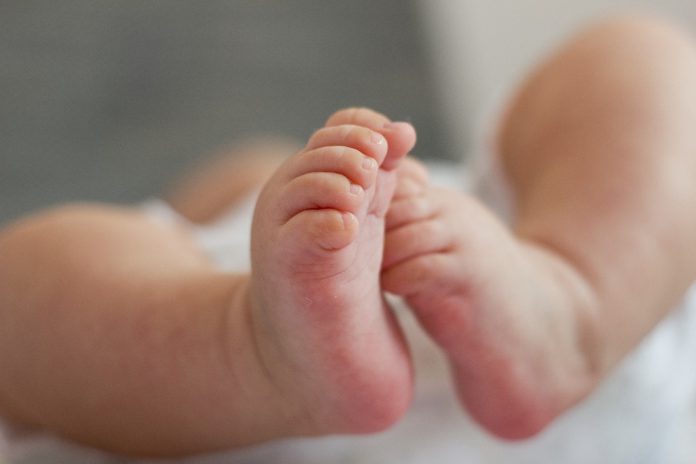There’s a mere 18-month age gap between this proud mum and her baby — and thanks to the wonders of science, the record-breaking infant is technically 27-years-old.
Molly Everette Gibson was born from an embryo that was frozen in October 1992 — only 18 months after her mother, Tina, now 29, was born in April 1991.
“It’s hard to wrap your head around it,” Tina told The Post from her home in Knoxville, Tennessee. “But, as far as we’re concerned, Molly is our little miracle.”
According to researchers at the University of Tennessee Preston Medical Library, the girl enters the history books as the longest-frozen embryo known to result in a live birth.

Remarkably, Molly’s October 26 arrival broke the previous record held by her sister, Emma Wren, who spent 24 years on ice before her delivery in November 2017.
The embryos were frozen together and are full genetic siblings. They were thawed nearly three years apart at the National Embryo Donation Center before their respective transfers into Tina’s uterus.

Since they were donated anonymously, their biological parents remain unknown.
“It is very rewarding for me to see an embryo that was frozen years ago result in the birth of a lovely baby,” said NEDC lab director Dr Carol Sommerfelt. “I feel honored to be part of the process.”
Tina and her husband, Benjamin, 36, first turned to the NEDC after trying naturally for their own child over the course of five years. Benjamin has cystic fibrosis, which can cause infertility.
The pair, married now for 10 years, had previously fostered kids and were considering traditional adoption. But, in early 2017, Tina’s parents told them about the nonprofit organization after watching an item about it on the local TV news.
“We were like, ‘That sounds crazy. No, thank you, we’re not interested,’ ” recalled Tina of the prospect of conceiving with a donor embryo. “Then we kept thinking about it and couldn’t get it out of our minds.”
They visited the center (conveniently based in their home city) and were presented with the profiles of around 300 strangers who had donated spare embryos following IVF treatment.
“We weren’t picky,” said Tina, who works as an elementary school teacher. “We just wanted a baby”.
Nonetheless, they narrowed the choice to couples who were short in stature — “we’re both small people,” laughed Tina — before considering the donors’ health backgrounds. They finally selected the embryo that later became Emma in March 2017.
Tina only discovered on the day of the transfer that it had been frozen for 24 years. “I asked the specialist, Dr Jeffrey Keenan: “What does that mean?’ ” she remembered. “And he replied: ‘Well, it could be a world record.”
“I trusted him.”
Emma turned out to be the light of their lives. After a couple of years, the Gibsons wanted to provide her with a brother or sister. Deciding to transfer the two remaining embryos from the same donors was a no-brainer.
Sommerfelt, who once again supervised the delicate thawing process, told The Post: “As long as the embryos are maintained correctly in the liquid nitrogen storage tank at minus 396 degrees, we feel they may be good indefinitely.
“With the birth of Molly, we know they can survive at least 27 and a half years and probably longer.”
The Gibsons’ second daughter was delivered weighing 6 pounds and 13 ounces after a relatively straightforward labor.
It hasn’t fazed them that Molly is considered something of “a big deal” in medical circles. Tina added: “To us, it’s more unbelievable that we have two precious little children that we never thought we could have.
“We hold Molly — this itty bitty baby — and we feel blessed.”
As for Molly’s big sister, she seems unruffled by the loss of her record as the ultimate “snowflake baby,” the often-used colloquial term for frozen embryos.
“They might have to fight it out when they get older,” quipped Tina.
In the meantime, Emma is “obsessed” with the 5-week-old, and constantly wants to pick her up. She was thrilled to receive a special doll when Molly joined the household. The tot named the toy after her sister and, according to Mom, “copies everything we do [to the baby] with her doll.”
Looking ahead, Ben and Tina are already discussing plans to expand their loving family.
Next time, it will likely be done through conventional adoption. They can’t get the girls another biological sibling from the NEDC, after all. “We’ve used up all the ‘genetic’ embryos to get Emma and Molly,” concluded Tina. “For them, we will forever be thankful.”

